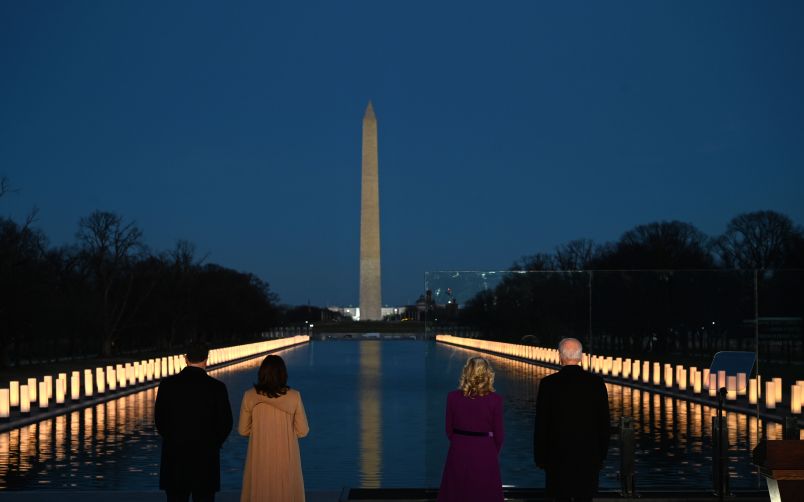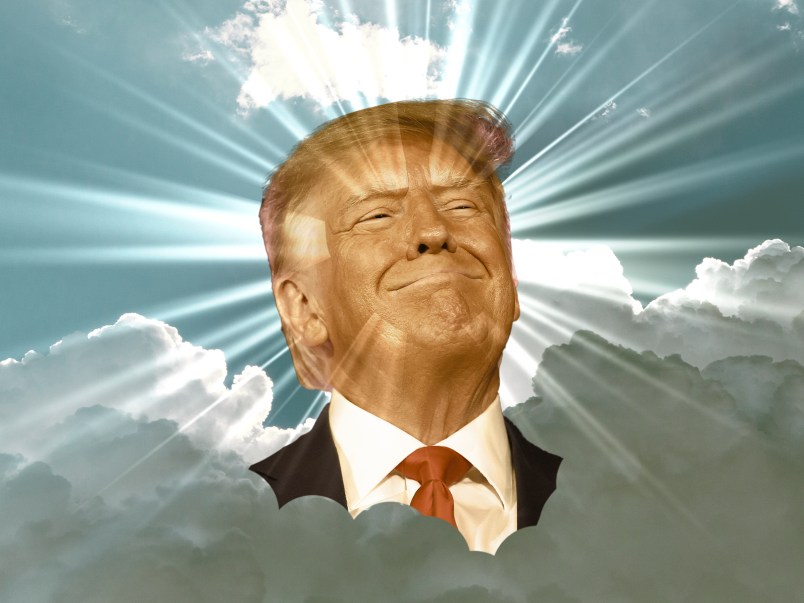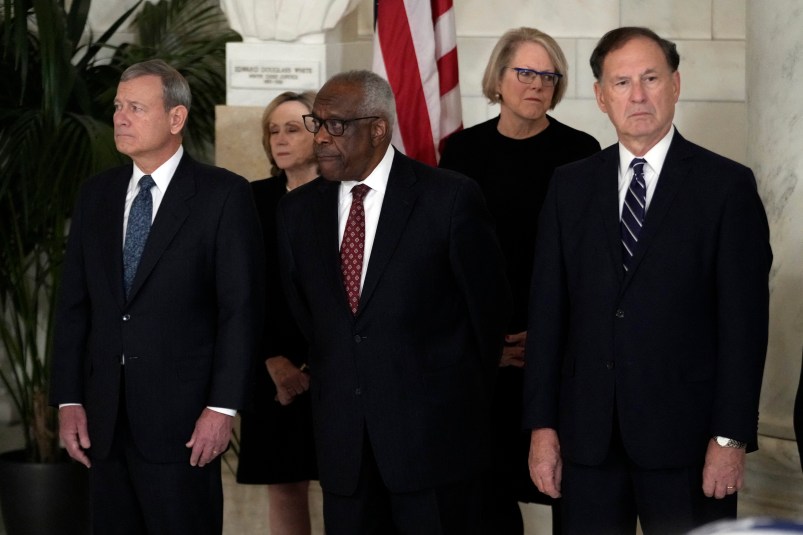If you didn’t see the COVID memorial service this evening – part of Joe Biden’s larger inauguration program – you really should. It is remarkable, simply remarkable that we are almost a year into this horrible epidemic and this is the first national memorial or commemorative service honoring, remembering the dead.
It is a remarkable and a devastating commentary. I did not quite grasp this absence until I saw it. We’ve fought so much over this epic calamity. We’ve seen so much deflection, blame-shifting and lies. Biden’s comments, remarkably brief, were a reminder that much of what we need is in silence, remembering and memorializing this catastrophic loss. We are now at more than 400,000 Americans dead, roughly the total number of fatalities over almost four years of World War II.
The brief program included two songs: Amazing Grace and Hallelujah.
This quiet, devastating and hopeful memorial reminded me of the remarkable and wholly improbable journey of this song, Hallelujah, into something like a canonical song of memorial or pathos in American culture. That this should be so is actually quite odd, not least because it is not at all clear what the song, in its totality, is even about. And a number of things the song is quite clearly about … well, they are not what you’d expect in a song now treated as appropriate, uplifting and fitting for all occasions and audiences.
Mainstream or memorial versions commonly expurgate the song’s erotic imagery. But it can’t all be ironed out. This energy, rumbling rough under the simplified lyrics, gives a power and ballast even to the more sanitized versions. In any case the mixing and matching of lyrics is possible because Leonard Cohen wrote numerous different lyrics for the song. You can mix and match them and create your own version.
Equally mysterious is the song’s evolution through time.
You likely know Leonard Cohen wrote Hallelujah but it’s probably not his version of the song you know. You probably think of Jeff Buckley’s recording. But that’s not actually Buckley’s version. It’s actually the arrangement, lyrics and interpretation of John Cale.
It’s complicated. So let’s go through it.
‘Hallelujah’ first appeared on Cohen’s 1984 album Various Positions, an album Cohen had a hard time getting released. Nor was Hallelujah a stand out song on the album. Cohen’s original version is slow-moving and husky. The lyrics, biblical and erotic, are forefronted – more like a spoken poem with musical accompaniment. It is a more Jewish song and quite different musically than the one you’re probably familiar with.
Seven years later John Cale, best known as a founding member of The Velvet Underground, covered the song on a Cohen tribute album called I’m Your Fan. Cale recast the song with the arrangement, tempo and lyrics that are the basis of most subsequent versions. And it was Cale’s version that Jeff Buckley heard and recorded.
There is a remarkable alchemy over these three versions and artists. Cale’s rendition is austere and spare, stripped down from Cohen’s loungey original, with almost an incantatory quality. His reworking has such a force behind it that it is Cale’s version that Cohen often performed in concert in later life. While Buckley essentially copied Cale’s arrangement, he added a bravura vocal performance with an ethereal almost mystical, heavily produced sound. It adds an interpretation and performative element that again transforms the song into something quite different.
Part of the protean nature of the song is encoded in the lyrics themselves with recurrent references to the incantatory power of words and sounds as numinous keys to the divine presence.
What’s remarkable is how long these recordings sat like smoldering embers before they caught fire in the culture. Buckley released his version in 1994 on the album Grace, his only studio album. But the album didn’t go gold until 2002, five years after Buckley died by drowning. Indeed, it wasn’t released as a single until 2007. Ironically, almost absurdly, one of the song’s key breakthroughs came when the song was included in the original Shrek in 2001. (The version in the movie itself is Cale’s though the version that appears movie soundtrack is Rufus Wainwright’s.) It’s the inclusion in Shrek that made the song almost ubiquitous in countless movies and TV shows. It functions like a touch point communicating things screenwriters can’t quite get on the page. But if this late in the TV episode arc use of the song has made it sometimes feel trite it is also now commonly used in funerals and memorials, a source of comfort and mystery to millions of people. Odd. But like all high art it has a life unconstrained by the intentions or assumptions of its various creators. People create new things out of it.
I’m far from the only one to note the mystery of the song’s ascent. There’s literally a whole book about it. In 2013 journalist Alan Light published The Holy or the Broken: Leonard Cohen, Jeff Buckley, and the Unlikely Ascent of “Hallelujah”, which charts the song’s history. It’s been on my list to read ever since. It’s supposed to be very good.
I confess, having listened to different versions thousands of times, I’m not entirely sure what makes the song tick. As best I can tell it is a series of highly resonant lyric images – God, sex, death, loss, incompleteness, resignation (“I did my best, it wasn’t much / I couldn’t feel, so I tried to touch”) that are only partly stitched together. And this play in the integument of the song can be used to tell countless different stories, much as people steeped in a common culture can speak to each other with references to songs, movies, novels. The central lyric repetition amounts to a kind of surrender. That is some big part of the song’s staying power.
It’s not a cry that you hear at night
It’s not somebody who’s seen the light
It’s a cold and it’s a broken hallelujah

 Members-Only Article
Members-Only Article



